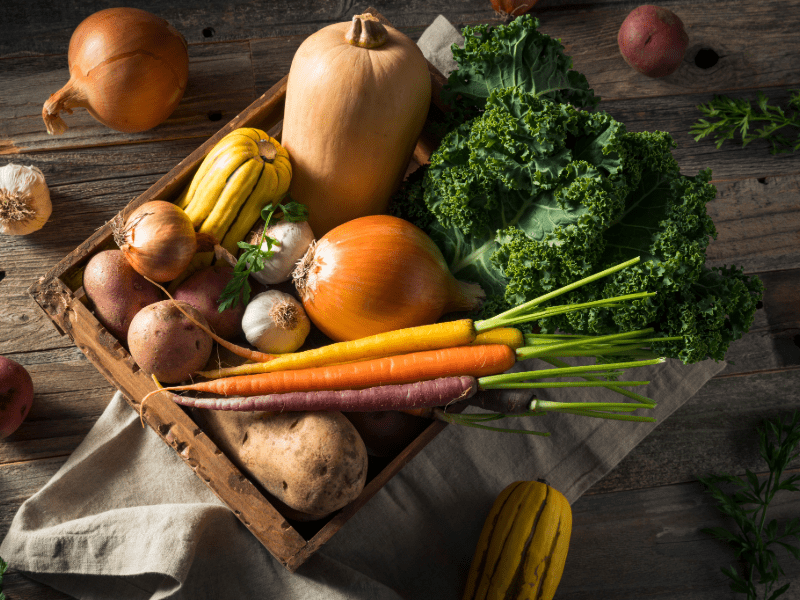From Harvest to High Margins
As summer winds down and cooler weather sets in, operators face two realities: shifts in customer dining patterns and higher food costs. The good news? Fall is one of the best seasons to build a profitable menu by focusing on seasonal availability, lower-cost proteins, and smart cross-utilization. Independent operators can keep customers satisfied, highlight comforting flavours, and protect margins without reinventing the wheel.

Why Fall Menus Matter for Profitability
- Traffic shifts: Back-to-school routines mean families dine out differently. Lunch sales may dip, while early dinners and weekend meals rise.
- Consumer cravings: Guests look for hearty, warming foods like soups, roasts, and braised dishes that rely on slower cooking and affordable cuts.
- Seasonal bounty: Canadian-grown root vegetables, squashes, apples, and pears are abundant and cost-effective.
- Margin pressure: Rising global food prices mean smart substitutions and menu streamlining are more important than ever.
Ingredient Strategies for Fall Profitability
Highlight seasonal produce – Pumpkins, carrots, squash, and root vegetables are plentiful and versatile. They bulk up stews, soups, and grain bowls at a fraction of the cost of imported produce.
Shift protein focus – Rather than relying solely on premium beef, integrate pork shoulder, chicken thighs, or cost-effective seafood items into comfort-style entrées. These proteins work beautifully in braises and oven-roasted dishes while keeping plate costs down.

Menu Engineering Tips
Feature “seasonal specials”: Rotate a few limited-time items built on affordable, seasonal ingredients. This creates urgency while managing costs.
Cross-utilize fall flavours: Roasted squash purée can be a soup base, ravioli filling, or side dish; apples can star in salads, pork glazes, or desserts.
Price smartly: Pair affordable proteins with perceived premium elements (house-made sauces, Canadian produce callouts) to justify attractive margins.
Kitchen Efficiency Gains
Fall menus can also streamline back-of-house operations:
- Braised dishes and soups can be prepped in bulk during quieter hours.
- Batch cooking reduces labour stress on peak nights.
- Smaller, more focused menus mean fewer SKUs and less spoilage.

Insights Tip: Market the Seasonal Story
Promote your fall menu as “crafted from Canadian harvests.” Guests respond positively to local sourcing language, even if your primary procurement is through your family-owned distributor. Call out “Ontario-grown carrots” or “Quebec apples” on menus and social media to capture attention without raising costs.
By leaning into seasonal produce, affordable proteins, and cross-utilization, operators can design fall menus that feel comforting to guests while protecting margins. With smart engineering and a local harvest story, fall becomes not just a season of hearty flavours—but of profitability, too. Click here to visit our new September/October flyer, and see what fall bonus points we have to offer!




